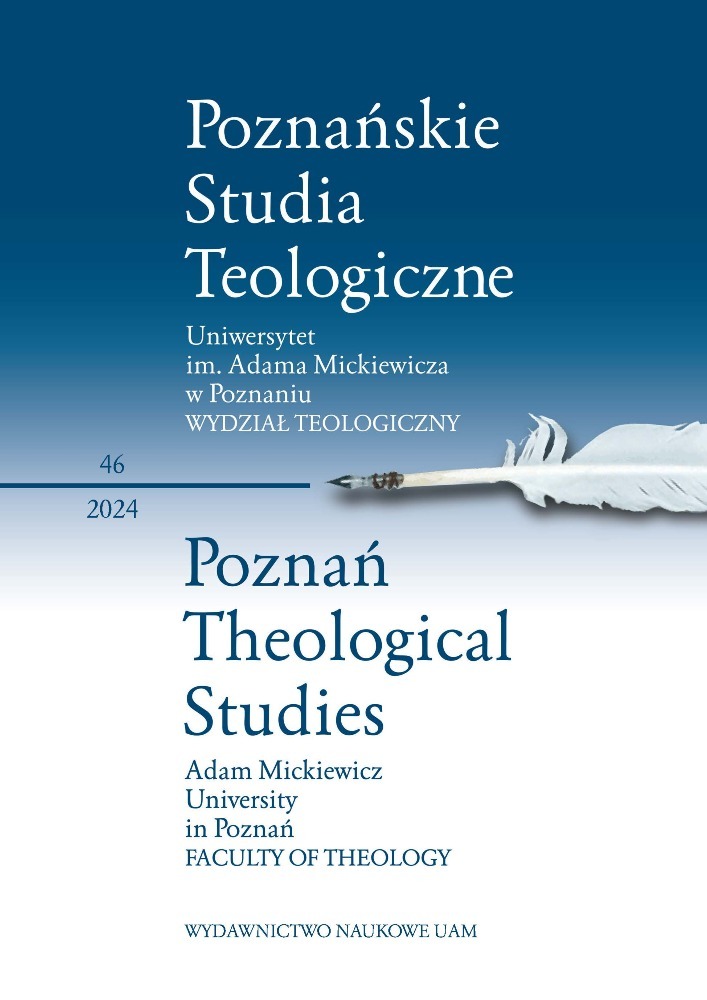Abstrakt
Jednym ze źródeł chrześcijańskiej liturgii jest obrzędowość żydowska. Przeżywana i celebrowana była w trzech zasadniczych momentach, które stanowiły: kult świątynny w Jerozolimie, domowy rytuał posiłku, a szczególnie uczta paschalna, jak również ryty synagogalne. Pytanie o to, który z nich stanowił pierwowzór chrześcijańskich celebracji, nie jest łatwe. Rola Paschy i Świątyni jest niewątpliwie dominująca. Pozostaje pytanie o rolę synagogi. Czy jest ona źródłem równorzędnym pozostałym dwóm, czy raczej źródłem marginalnym? Artykuł próbuje pokazać, że panuje między nimi relacja wzajemnego dopełniania się, a żadnego ze źródeł nie można uznać za dominujące. Aby to uczynić, w pierwszej części pracy, posługując się metodą historyczno-ewolucyjną oraz analizą tekstów źródłowych, ukazano historyczne kształtowanie się liturgii synagogalnej pod kątem jej relacji do liturgii świątynnej w Jerozolimie. Druga część, wykorzystując metodę opisowo-analityczną z elementami metody komparatystycznej, bada, jakimi drogami liturgia synagogalna przeniknęła do liturgii chrześcijańskiej. Dzięki temu w ostatniej części, przy zastosowaniu metody syntetycznej, możliwe było odniesienie się do zasadniczego problemu badawczego pracy, jakim jest ukazanie, w jaki sposób to, czego zapowiedzią była synagoga, dokonuje się w sposób doskonały w Chrystusie i w założonym przez niego Kościele. Zrozumienie historycznego procesu adaptacji synagogalnych form kultu pozwala lepiej zrozumieć formy liturgiczne, z którymi w celebracji spotykamy się w czasach współczesnych. Zadanie to ma znaczenie przede wszystkim pastoralne. Lepsze zrozumienie źródeł liturgii pozwala owocniej przeżywać Misteria.
Bibliografia
Barker M., Great High Priest: The Temple Roots of Christian Liturgy, T&T Clark, London–New York 2003.
Beauchamp P., Accomplir les Écritures: Un chemin de théologie biblique, „Revue Biblique” 99 (1992), 1, s. 132–162.
Bouyer L., Eucharistie. Theologie et spiritualite de la priere eucharistique, Desclée, Paris–Tournai 1966.
Bouyer L., Liturgical Piety, University of Notre Dame Press, Notre Dame, IN 1955.
Dix G., The Shape of the Liturgy, Dacre Press, London 1949.
Dzidek T., Sikora P., Metody, w: Poznanie teologiczne, red. T. Dzidek, Ł. Kamykowski, A. Napiórkowski, (Teologia fundamentalna 5), Wydawnictwo Naukowe Uniwersytetu Papieskiego Jana Pawła II, Kraków 2018, s. 151–174. DOI: https://doi.org/10.15633/9788374387262.06
Elbogen I., Jewish liturgy: a comprehensive history, The Jewish Publication Society, Philadelphia–New York 1993.
Gavin F.S.B., The Jewish Antecedents of the Christian Sacraments, The MacMillan, London 1928.
Goltz E.A. von der, Tischgebete und Abendmahlsgebete in der altchristlichen und in der griechischen Kirche, J.C. Hinrichs, Leipzig 1905.
Horst P.W. van der, Newman J.H., Early Jewish Prayers in Greek, De Gruyter, Berlin–New York 2008. DOI: https://doi.org/10.1515/9783110211122
Jewish and Christian liturgy and worship: new insights into its history and interaction, ed. by A. Gerhards, C. Leonhard, Brill, Leiden–Boston 2007.
Josephus with an English translation by H.St.J. Thackeray, M.A. Hon. D.D Oxford, Hon. D.D. Durham, in nine volumes, vol. III: The Jewish War, Books IV–VII, ed. by T.E. Page et al., William Heinemann LTD, Harvard University Press, London–Cambridge 1961.
Kohler K., Über die Ursprünge und Grundformen der synagogalen Liturgie. Eine Studie: II (Schluss), „Monatsschrift für Geschichte und Wissenschaft des Judentums” 37 (1893), 11, s. 489–497.
Konstytucja o liturgii świętej „Sacrosanctum concilium”, w: Sobór Watykański II: konstytucje, dekrety, deklaracje: tekst polski, nowe tłumaczenie, red. M. Przybył, Pallotinum, Poznań 2002, s. 48–78.
Leithart P.J., Synagogue or temple?: models for the Christian worship, „The Westminster Theological Journal” 64 (2002), 1, s. 119–133.
Making of Jewish and Christian Worship, ed. by P.F. Bradshaw, L.A. Hoffman, University of Notre Dame Press, Notre Dame, IN 1991.
Marcus J., A Jewish-Christian ʼAmidah, „Early Christianity” 3 (2012), 2, s. 215–225. DOI: https://doi.org/10.1628/186870312800778220
Nadler J.B., Les racines juives de la messe, Éditions Emmanuel, Paray-le-Monial –Tours 2015.
Oesterley W.O.E., The Jewish Background of the Christian Liturgy, Clarendon Press, Oxford 1925.
Papieska Komisja Biblijna, Naród żydowski i jego Święte Pisma w Biblii chrześcijańskiej, Instytut Teologii Biblijnej Verbum, Kielce 2002.
Paprocki H., Hipolita Rzymskiego „Tradycja Apostolska” : wstęp, przekład, komentarz, „Studia Theologica Varsaviensia” 14 (1978), 1, s. 145–169.
Philo of Alexandria, De specialibus legibus, księga I, tłum. własne, on-line: https://www.earlyjewishwritings.com/text/philo/book27.html [dostęp: 10.3.2024].
The Cambridge history of Judaism, ed. by W.D. Davies et al., Cambridge University Press, Cambridge–New York 1984.
The New Jerusalem Bible, a Roman Catholic translation, ed. by H. Wansbrough, Darton-Longman-Todd, London 1990.
Vanhoye A., Accomplir, w: Vocabulaire de théologie biblique, éd. X. Léon-Dufour, Editions du Cerf, Paris 2014, s. 9–11.
Werner E., The Sacred Bride, Columbia University Press, London–New York 1959.
Licencja
Prawa autorskie (c) 2024 Szczepan Kaleciak

Utwór dostępny jest na licencji Creative Commons Uznanie autorstwa – Użycie niekomercyjne – Bez utworów zależnych 4.0 Międzynarodowe.

